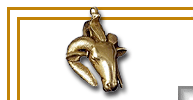|
This Tanto, which dates to about 1820, is fully mounted in period fittings. The Fuchi, Kashira, Kojiri, Kozuka handle and Kogai are all matched, of pale brass, with a simple pattern that may represent a millet field with a stream running across it. The small Tsuba has a line pattern around the edge that seems to belong with the rest, but the small area of decoration does not allow the full pattern. The Tsuba fits very loosely as the copper fitting plugs have never been inserted. The menuki, birds of dark copper, match the rest of the fittings, as a bird would view the field from above. The Habaki and Seppa (not imaged) are of copper and very simple. To find a fully matched set of fittings is fairly rare.
The hilt is set with very finely textured ray skin (Same) and the Tsuka Ito (wrapping) is a simple cord that has been coated with brown lacquer for waterproofing. The Saya (Scabbard) is wood with dark red lacquer with black flecks, and a black lacquer Kurikai (cord knob). There is a pocket on each side to hold the Kozuka and Kogai.

The blade, with tang, is 266 mm long with a 190 mm cutting edge and 24 mm at the widest point. There is no signature. (Tanto are rarely signed). Note that the blade looks black in the image, but that is a problem with our imaging system. The actual color is a normal steel grey.

The grain, details of which are visible on the image above, is a very tight, simple straight (Masame-hada), with a regular zigzag (Gunome) temper-line which straightens towards the tip and is complete around the tip. The blade section Hira-zukuri (the most common on Tanto) has a very low (Nume-hikushi) back ridge. The polish is good, but not perfect.

Details of the Kozuka (utility knife) and Kogai (skewer): Note that the Kozuka blade is signed but we have not yet been able to translate the signature. It is likely that the Kozuka blade is much older than the other parts of this Tanto. | 








